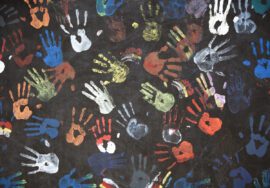
The Reality of Domestic Abuse: Shocking Statistics and What You Can Do
Domestic abuse, also known as intimate partner violence, is a pervasive issue that affects countless individuals and families across Canada. The statistics surrounding domestic abuse are alarming, highlighting the urgent need for greater awareness and action.
The Statistics
The statistics surrounding domestic abuse in Canada are truly shocking. According to a report by Statistics Canada, there were over 67,000 incidents of intimate partner violence reported to police in 2019 alone. In addition, it is estimated that only about one in four incidents of domestic violence are actually reported to the authorities. This means that the actual number of incidents is likely much higher.
Perhaps even more alarming is the fact that domestic violence is often fatal. On average, one woman is killed by her intimate partner every six days in Canada. Indigenous women and girls are particularly at risk, as they are six times more likely to be killed by their partner than non-Indigenous women. Additionally, the Canadian Women’s Foundation (2021) reports that half of all women in Canada have experienced at least one incident of physical or sexual violence since the age of 16.
The impact of domestic abuse on victims is far-reaching and devastating. Beyond the physical harm, survivors of abuse often experience long-term psychological and emotional trauma, financial instability, and social isolation. Children who witness abuse in the home are also at increased risk of experiencing a range of negative outcomes, including mental health issues, academic difficulties, and future involvement in abusive relationships.
It is important to note that domestic abuse affects individuals from all walks of life, but certain populations are particularly vulnerable. Indigenous women, for example, experience rates of violence 3.5 times higher than non-Indigenous women (Canadian Women’s Foundation, 2021). Additionally, individuals with disabilities, those living in poverty, and members of the LGBTQ2S+ community are also at increased risk.
What You Can Do
The reality of domestic abuse can be overwhelming, but there are steps we can take to help prevent it. So, what can be done to address domestic abuse and support survivors? Firstly, it is crucial to raise awareness about the issue and break the silence that often surrounds it. This includes educating ourselves and others about the signs of abuse, and understanding that domestic abuse is never the victim’s fault. It also means speaking out against harmful attitudes and behaviors, and supporting survivors without judgment.
In addition to raising awareness, there are a variety of resources available to those experiencing domestic abuse, including crisis hotlines, shelters, and counseling services. Organizations like Thompson Crisis Center Manitoba provide a 24-hour crisis line, safe shelter, counseling and support services, and advocacy and referrals (Thompson Crisis Center Manitoba, 2021). By reaching out for help, survivors can access the support they need to heal and rebuild their lives.
In conclusion, the reality of domestic abuse in Canada is alarming, but it is important to remember that there is hope. By raising awareness, supporting survivors, and working towards a culture of respect and equality, we can create a society where domestic abuse is no longer tolerated or ignored.
Sources:
Government of Canada. (2021). Family violence in Canada: A statistical profile, 2019. Retrieved from https://www150.statcan.gc.ca/n1/pub/85-002-x/2021001/article/00002-eng.htm
Canadian Women’s Foundation. (2021). Domestic violence. Retrieved from https://canadianwomen.org/the-facts/domestic-violence/
Ontario Association of Interval and Transition Houses. (2019). Domestic violence in Canada. Retrieved from https://www.oaith.ca/domestic-violence-in-canada/








